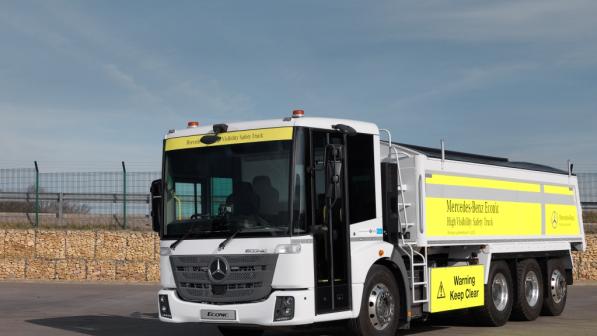London step closer to driving unsafe lorries off its roads

The DVS will be the first initiative of its kind to categorise HGVs depending on the level of a driver’s direct vision from a cab. HGVs will be given a rating between ‘zero-star’ (lowest) and ‘five-star’ (highest), with only those vehicles rated ‘three-star’ and above, or which have comprehensive safety systems, able to operate in London from 2024.
The development of the proposed Direct Vision Standard forms part of the Mayor of London and TfL’s Vision Zero approach to reducing road danger. Duncan Dollimore, Cycling UK's Head of Campaigns and Advocacy, welcomed the move saying there was an opportunity for other cities to copy their actions: "This is the first scheme of its type in the world which is looking to address directly the cause of many pedestrian and cyclist fatalities: poorly designed lorry cabs that restrict visibility. Cycling UK looks forward to working with TfL in our collective aim to reduce road danger, and we encourage other cities to share the Mayor's vision to make our roads safer for all users."
Research by TfL shows that during 2014 and 2015, HGVs were involved in disproportionately high numbers of fatal collisions with cyclists (58 per cent) and pedestrians (22.5 per cent) on London’s streets, despite only making four per cent of the miles driven in the Capital.
Cycling UK looks forward to working with TfL in our collective aim to reduce road danger, and we encourage other cities to share the Mayor's vision to make our roads safer for all users.
Duncan Dollimore, Cycling UK Head of Campaigns and Advocacy
The release of the interim star ratings for individual Euro VI HGV models will help ensure that vehicles being manufactured, purchased or leased can be compliant with both Ultra-Low Emission Zone requirements and the DVS. TfL will continue to work with manufacturers to ensure interim star ratings for other HGV models can be released later this year.
TfL says it's trod the fine line between ensuring business runs smoothly, while also keeping its most vulnerable travellers safe. Alex Williams, TfL’s Director of City Planning, said: “Businesses across the Capital need HGVs to operate, however the number of deaths involving HGVs is unacceptable. The industry has already made significant advancements to safety and has been very keen to support to the work we are doing to go even further and develop the Direct Vision Standard. Alongside the Mayor, we are committed to ridding London’s streets of dangerous vehicles and are taking a Vision Zero approach to road danger. We welcome the industry’s feedback on our latest proposals for the Direct Vision Standard as we work together to improve vehicle safety.”
Industry views have helped shape the proposals which now include plans for an HGV safety permit scheme based on the DVS ratings, and industry-recognised safety systems to reduce road danger.
If approved, the proposals will require all HGVs over 12 tonnes to hold a safety permit to enter or operate in the capital from 2020. Those rated ‘one star’ and above would automatically be granted a permit, while those rated ‘zero star’ (lowest) would have to include specific recognised safety systems, such as sensors, visual warnings and comprehensive driver training, before a permit is granted. The safety permit scheme would evolve over time, taking into account advances in technology.
The details of this ‘safe system’ will be included in the autumn consultation, and the expertise of both industry experts and vulnerable road user representatives will continue to be an important part of developing the plans.
It is proposed that from 2024 only those rated ‘three star’ and above, or which have an advanced safety system, would be allowed on London’s streets.
A Five Star lorry

Councillor Julian Bell, Chair of London Councils’ Transport and Environment Committee, said: “Improving road safety for pedestrians and cyclists, who are more vulnerable to the risks posed by lorries, is a high priority for London’s boroughs. I therefore welcome the announcement of the new Direct Vision Standard ratings and call on vehicle manufacturers to develop more lorry cabs that rate highly. London Councils and the boroughs will continue to work closely with TfL to remove the most dangerous lorries from London’s streets.”
A Zero star lorry



